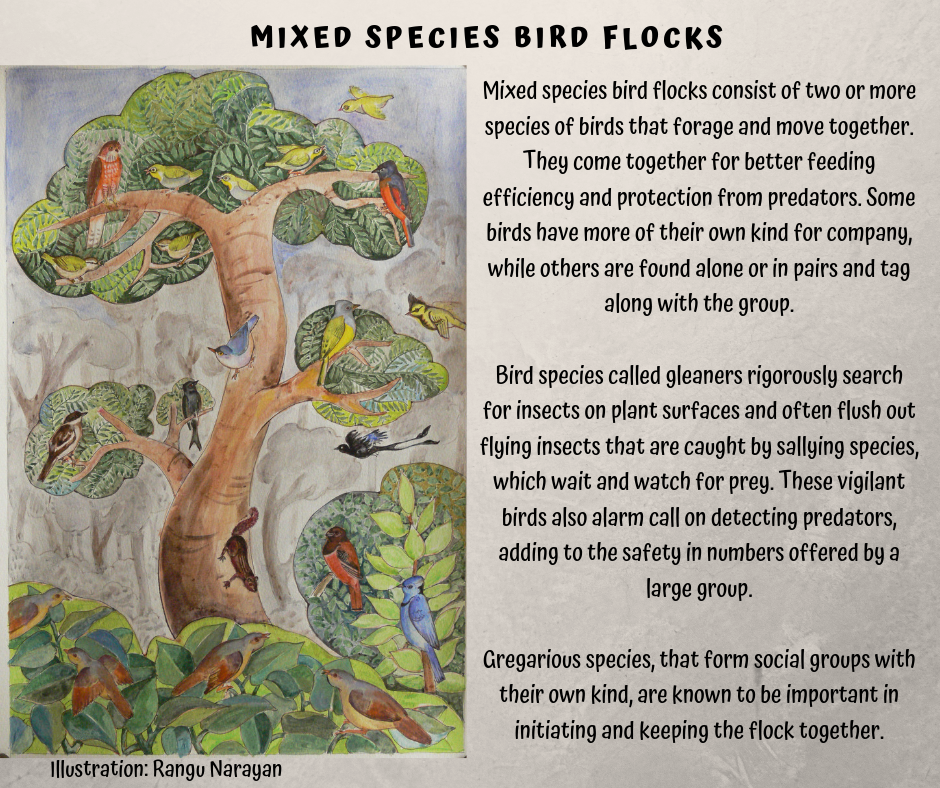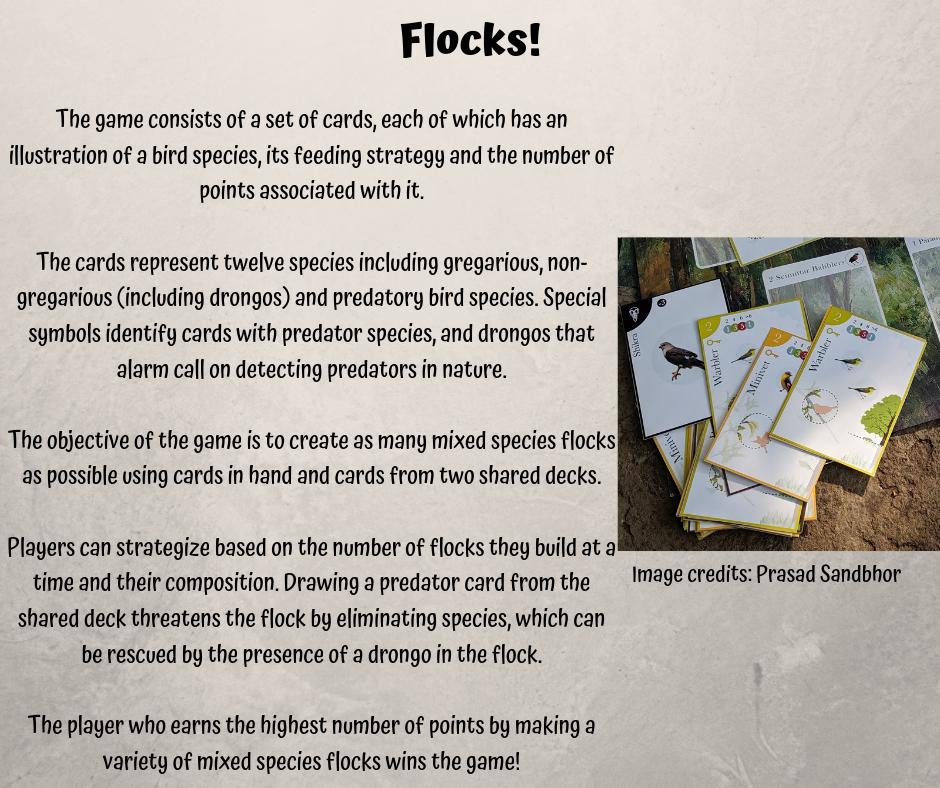
There are animated parties in the forest with a motley bunch of attendees, their colours and calls hidden among the trees. Pay a little more attention and you can see birds of various hues and sizes in a palpable buzz of activity. Mixed species bird flocks have been reported all around the world, and form the basis of a new card game called “Flocks!” developed by an unlikely duo.

“In the beginning it is overwhelming because you see one bird, then you see another and then you realize there could be so many…there is not just one or two species but very often, several of them,” says Priti Bangal who studies mixed species bird flocks as a PhD student at the Centre for Ecological Sciences, Indian Institute of Science, Bangalore.
“There is some systemic kind of play inherent in mixed species bird flocks,” says Prasad Sandbhor, a freelance game designer based in Bangalore. He got interested in issues related to nature and society through extra-curricular activities while growing up, and now designs games professionally.
The game rules do not move away from scientific observations. The creators did not bring in anything alien for the sake of a story. For example, gregarious species are important in the formation of mixed species flocks and hence their role as flock starters in the game.
Also Read: An Overview of the Gardens Under the Sea
Another important rule states that a species added once, singly or in a group, cannot be added to a mixed species flock again. The idea comes from the fact that a family group of a gregarious species present in a mixed species flock is not joined by another family of the same species.
It is the same in case of solitary species, which are often territorial in nature. “I try to justify the ecology side of things and he [Prasad] tries to justify the game-play side of things. We always try and find the balance in between,” Priti says.

“When we started, we thought anybody could play this game and our play testing has been with a wide age group,” Prasad says. From the feedback they have received, it seems to be especially effective among high school kids.
It is a good introduction to birds and mixed species flocks, and players seem to remember the roles of birds – warblers as flock starters, drongos as protectors and the interactions between other species. “It is a good way to introduce people to the different elements in the flock…but it is not a lesson plan,” Priti says.
The popularity of other science-based games in the market such as Birds of a Feather, Wingspan, Evolution and Phylo, gives them confidence that there are takers for Flocks!.
“It has the potential to be a game on its own and we would like to bring it out in the world for people to play,” Prasad says. They would like to keep it self-sustainable and are looking for companies or ecological organisations who may be interested in collaborating. They also want to collaborate with schools to test the game with a larger audience and use it as a means of scientific outreach.
The journey so far has inspired them to keep working on designing games and playful material like stories and comic books among other formats. They want to work on material that connects players to nature, making them curious to look around and observe natural phenomena, says Prasad.
For Priti, discussing mixed species flocks with people outside an ecology background has allowed her to think about questions that may otherwise be taken for granted. “It helps me become clearer in articulation about the system,” she adds. “It definitely has been a fun and enriching experience.”
If you are interested in the game, please get in touch with Priti and Prasad at — pritibangal@iisc.ac.in, sandbhorprasad@gmail.com.
This article was originally published on India Bioscience. Read it here.

